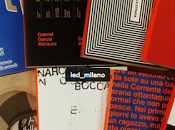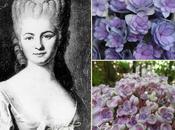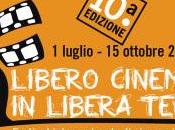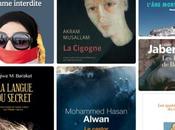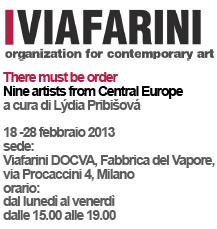 Fabbrica del Vapore Milano (MAPPA): lunedì 18 febbraio 2013, 18.30 | There must be order – nine artists from Central Europe. Viafarini DOCVA presenta a cura di Lýdia Pribišová, la mostra collettiva There must be order, con i lavori / opere video di nove artisti provenienti dall’Europa Centrale - Slovacchia, Repubblica Ceca, Austria – che contestano quel sistema e ordine precostituito accettati dalle masse in modo acritico: Matej Gavula, Anetta Mona Chisa & Lucia Tkáčová, Lucia Nimcová, Zbyněk Baladrán, Ľubomír Ďurček, Anna Witt, Eva Jiřička, Kamen Stojanov. La residenza di Lýdia Pribišová presso VIR Viafarini-in-residence rientra nell’ambito della collaborazione con il Centro per l’Arte Contemporanea FUTURA di Praga ed è resa possibile grazie al Ministero per i Beni e le Attività Culturali, Direzione generale per il paesaggio, le belle arti, l’architettura e l’arte contemporanee. >>
Fabbrica del Vapore Milano (MAPPA): lunedì 18 febbraio 2013, 18.30 | There must be order – nine artists from Central Europe. Viafarini DOCVA presenta a cura di Lýdia Pribišová, la mostra collettiva There must be order, con i lavori / opere video di nove artisti provenienti dall’Europa Centrale - Slovacchia, Repubblica Ceca, Austria – che contestano quel sistema e ordine precostituito accettati dalle masse in modo acritico: Matej Gavula, Anetta Mona Chisa & Lucia Tkáčová, Lucia Nimcová, Zbyněk Baladrán, Ľubomír Ďurček, Anna Witt, Eva Jiřička, Kamen Stojanov. La residenza di Lýdia Pribišová presso VIR Viafarini-in-residence rientra nell’ambito della collaborazione con il Centro per l’Arte Contemporanea FUTURA di Praga ed è resa possibile grazie al Ministero per i Beni e le Attività Culturali, Direzione generale per il paesaggio, le belle arti, l’architettura e l’arte contemporanee. >>
Comunicato stampa a cura dell’Ufficio Creatività Giovanile e Fabbrica del Vapore del Comune di Milano -
Attraverso interventi, performance e azioni gli otto artisti sovvertono le regole sociali e rifiutano di conformarsi alle pratiche che caratterizzano la società contemporanea. Le situazioni scaturiscono da questi approcci sovversivi, dai risvolti spesso bizzarri e divertiti, coinvolgono gli osservatori inconsapevoli di gravitare intorno allo spazio d’azione degli artisti. Questi interventi divengono la base del loro lavoro artistico a cavallo tra performance, public art e video. In alcune opere convivono un sincero desiderio di agire per il bene e un bisogno, non privo di malignità, di combattere le assurdità e le contraddizioni del quotidiano. Gli artisti contestano il sistema sociale con una violenza sottile, spudorata ma al contempo criptica, osservando poi i risultati delle loro azioni con un sorriso sarcastico e nascosto. Provocano inoltre dispute su questioni come la proprietà pubblica e privata, le regole del quieto vivere e i limiti dell’umana sopportazione. Altri lavori, invece, esaminano i limiti e i confini della legge, interrogandosi su cosa sia ancora legale e cosa no.
MATEJ GAVULA
La proiezione parte con Spiral (2010) di Matej Gavula (1972, Bratislava, Slovacchia) che offre un’introduzione emblematica, una metafora dell’ordine sociale e delle situazioni che si ripetono ciclicamente. Gavula è principalmente uno scultore ma esplora le possibilità espressive di vari media come performance e video con un pronunciato riferimento al concettualismo. Si focalizza sulle situazioni banali, di routine e spesso assurde, oltre che sull’autenticità del discorso depurato dalle convenzioni. Si è esibito alla Hit Gallery in Bratislava (2010), all’Hunt Kastner artworks a Praga (2010-2011), alla Plusmínusnula Gallery a Žilina (2012), allo show Hosted in Athens in Grecia (2012), e altri.
ANETTA MONA CHISA & LUCIA TKÁČOVÁ
Il lavoro di Anetta Mona Chisa (nata nel 1975 a Nadlac, Romania, attualmente vive a Praga) e Lucia Tkáčová (nata nel 1977 a Banská Štiavnica, Slovacchia, attualmente vive a Berlino) è caratterizzato da un approccio sarcastico, ribelle e anti-autoritario. Le artiste utilizzano tecniche di dislocamento, sabotaggio e sovversione per contestare le strutture, i sistemi di potere e le gerarchie di genere. Il loro lavoro è politicamente scorretto, analizza gli aspetti paradossali del conformismo e dell’impossibilità, della sovversione, mostrando l’essenza e le regole basiche del sistema globale, evidenziando la relatività dei criteri predefiniti e demistificando e prendendosi gioco della società e del suo sistema di relazioni. Lavorano insieme dal 2000, basando i loro progetti su storie personali e la loro interazione e accesso alle differenti forme di potere. Tra le loro mostre menzioniamo la partecipazione alla 54a Biennale di Venezia nel 2011; nel 2010 hanno esposto al MLAC a Roma, nel 2009 alla Christine Koenig Gallery a Vienna. Tra le esposizioni recenti si ricordano: Over the Counter, Mucsarnok Kunsthalle, Budapest; Gender Check, MuMok Vienna; While Bodies Get Mirrored, Migros Museum fur Gegenwartskunst, Zurigo; The Reach of Realism, Museum of Contemporary Art, Miami; The Making of Art presso la Schirn Kunsthalle Frankfurt; Chisa & Tkáčová al Neuer Berliner Kunstverein; 6a Biennale di Taipei; L’Europe en devenir presso il Centre Culturel Suisse di Parigi; Shooting Back al Thyssen-Bornemisza Art Contemporary, Vienna.
LUCIA NIMCOVÁ
Lucia Nimcová (nata nel 1977 in Humenné, Slovacchia, attualmente vive ad Amsterdam) presenta un progetto che si confronta con la realtà slovacca nel periodo tra il 1968 e il 1989. Il suo video/slide show, Kiss, rappresenta una selezione meticolosa di foto provenienti dal Centro Culturale Regionale della sua città di origine, creando una struttura che può essere considerata un modello di riferimento per le relazioni nella società in generale. Nella maggior parte degli scatti selezionati non c’è alcuna intenzionalità, ma al contrario una totale passività del soggetto immortalato. Secondo l’artista questo è l’approccio migliore per rappresentare la vita durante il comunismo quando una crudele passività sostituiva ogni forma di responsabilità individuale. Nel progetto Double Coding ha selezionato dei frammenti di film vietati dal regime nei quali la vita è restituita attraverso le tracce lasciate da lapsus labiali sopravvissuti sotto forma di testimonianze involontarie. Lucia Nimcová ha ricevuto diversi premi di rilievo internazionale come l’ECB Photography Award, Germania, 2008; l’Oskar Barnack Award, Germania, 2007 e 2008; il Baume & Mercier Award, 2007, Italia.
ZBYNĚK BALADRÁN
Zbyněk Baladrán (nato nel 1973 a Prague) è un artista visuale e curatore. Il suo lavoro può essere definito come una costante ricerca dei nessi tra le costruzioni passate e i modelli epistemologici dominanti. Spesso crea mappe e modelli cognitivo-mentali intesi come metodi per costruire informazioni, consentendo all’occhio della mente di visualizzare, codificare e immagazzinare informazioni per poi decodificarle e utilizzarle. Spesso ci si riferisce a Baladrán come a un archeologo della conoscenza e della memoria e nei suoi lavori continua a servirsi di note, mappe e diagrammi come traduzioni e rappresentazioni di concetti, idee e interrelazioni. In collaborazione con Vít Havránek ha curato l’ideazione di Monument to Transformation, un progetto di ricerca della durata di tre anni sulla trasformazione sociale che è stato presentato nel 2009 presso la City Gallery di Praga e che è stato poi trasportato in altre sedi europee. Baladrán è stato anche membro del team curatoriale (tranzit.org) della Manifesta 8, Murcia, Spagna nel 2010. Nel 2012 ha partecipato al 7th Seoul International Media Art Biennale di Seoul, alla mostra The Islands of Resistance in the National Gallery, Praga, nel 2011 prende parte allo show A terrible beauty is born durante l’11a Biennale de Lyon a Lione, nel 2010 partecipa al Formate der Transformation 89-09 presso il Museum auf Abruf di Vienna, nel 2009 alla Moscow Biennale of Contemporary Art di Mosca oltre ad altre partecipazioni.
ĽUBOMÍR ĎURČEK
Ľubomír Ďurček (nato nel 1948 a Bratislava) occupa un posto speciale in questa rassegna. Come membro della scena artistica slovacca non ufficiale, non gli era stato permesso di esibirsi in pubblico prima del 1989. Negli anni ottanta si è interessato delle azioni e delle performances di gruppi ristretti che rappresentavano spesso il loro ruolo sociale reale guidati da una sceneggiatura preordinata dall’artista, offrendo così ritratti di una società limitata. Nel cortometraggio Information…about Hands and People ha realizzato una performance con un gruppo di giovani partecipanti che non si conoscevano e non si erano mai visti precedentemente. La loro prima forma di relazione è stato un contatto di mano. Durante la performance, svoltasi in un silenzio totale, i partecipanti dovevano mantenere gli occhi coperti da una maschera, utilizzando il tatto come unico modus comunicandi. Questo film in bianco e nero in 16 mm, essenziale ed esistenziale, ci riporta al periodo della censura, della normalizzazione, della perdita del senso, del silenzio e della cecità che caratterizzò l’ex Cecoslovacchia. Inoltre l’esperimento mostra la dinamica e la ricchezza della comunicazione non verbale che facilita la relazione tra gli individui rendendola forse più sincera.
ANNA WITT
Nata nel 1981 a Wasserburg Inn (Germania), vive e lavora a Vienna. Si esprime tramite interventi performativi e istallazioni video. La ricerca artistica di Anna Witt si focalizza sulla costruzione di stereotipi culturali e sull’osservazione della posizione dell’individuo all’interno del sistema sociale. Il suo lavoro prende in esame le regole sociali, i diritti, le leggi e come gli individui interagiscono con esse. Analizza, inoltre, le difficili dinamiche della formazione soggettiva in relazione all’identità politica, alla collettività, al conformismo e ai diritti civili. Ha partecipato a Manifesta 07 e ad alcune esibizioni presso la Columbus Art Foundation, lo Spinnerei Leibzig, la Low Salt Gallery a Glasgow, la <rotor> Association for Contemporary Art di Graz e ad altri eventi.
EVA JIŘIČKA
Nata nel 1979 a Praga (Repubblica Ceca) dove vive e lavora. L’approccio artistico di Eva Jiřička oscilla tra la performance, l’intervento in spazi pubblici e la video installazione. Lo scopo dell’artista consiste nel provocare una reazione nei passanti che incontra per le strade, che sono il suo campo d’azione privilegiato. I suoi interventi appaiono manipolatori, se non addirittura aggressivi, anche se seguono l’imperativo morale di agire per il bene altrui. L’artista ha partecipato, inoltre, alla Biennale di Petersburg nel 2006, ad alcune esibizioni presso la LCC Well Gallery a Londra, Futura Gallery a Praga, presso la Galerie UNA a Bucarest tra gli altri.
KAMEN STOJANOV
Nato nel 1977 a Rousse (Bulgaria), vive e lavora a Vienna. Nel suo lavoro, Kamen Stoyanov si focalizza principalmente su due concetti: la critica dell’egemonia delle culture dominanti e gli effetti di tale dominio nei media, nella struttura sociale, urbana e architettonica. Kamen Stoyanov contesta, inoltre, l’utilizzo non autorizzato dello spazio pubblico e, in particolare, si è interessato delle questioni riguardanti le forme contemporanee di migrazione e nomadismo. Ha partecipato a Manifesta 07 nel 2008, all’International Istanbul Biennale nel 2007 e ad alcune mostre presso il Museum Moderner Kunst Stiftung Ludwig di Vienna, la Galerie für Zeitgenössische Kunst di Leipzig, la Kunsthalle di Vienna, the Blut & Honig, Zukunft ist Balkan am, presso la Essl Collection di Vienna (curata da H. Szeemann) oltre che ad altre iniziative artistiche.
Lista e ordine delle opere:
Matej Gavula
Spiral, 2010
Anetta Mona Chisa & Lucia Tkáčová
Capital, 2005
Lucia Nimcová
Kiss 2006-2007
Double Coding 2010
Zbyněk Baladrán
Minus ten anarcho-communist minutes, 2012
All for no reason II., 2012
Ľubomír Ďurček
Information about hands, 1982
Anna Witt
Critical Action Archive 2012
Hoheitszeichen, 2012
Eva Jiřička
Gratis Punch, 2005
Seating order, 2008
Kamen Stojanov
Move your hands, 2007
————
opening February 18, 6.30 pm
period: February 18 – 28th
venue: Viafarini DOCVA, Fabbrica del Vapore, via Procaccini 4, Milan
hours: from Monday to Friday, 3.00 – 7.00 pm
Viafarini is glad to present There must be order – nine artists from Central Europe, a group show curated by Lýdia Pribišová featuring nine artists from Central Europe (Slovakia, Czech Republic, Austria) who are questioning the system and order undoubtedly accepted by most. The residency of Lýdia Pribišová is part of the agreement with FUTURA Centre for Contemporary Art in Prague, and is supported by the Ministry of Cultural Heritage and Activities, General Direction for landscape, fine arts, and contemporary arts and architecture.
The nine artists involved create interventions, performances and actions in which they belittle and deny social rules, conformity and other phenomena characteristic of contemporary society in a subversive way. The situations created, often bizarre and funny involve random passers-by who happen to be in the public spaces where the artists operate. These interventions become the basis of their work defined as something in between performance, public art and videos. Some of their work detects a mixture of a sincere desire to do good and at the same time a need, with a dose of malice, to confront the defects, absurdities and contradictions that are found in everyday life. These artists challenge the social system with subtle violence, impudent but well hidden, observing the results of their actions with a smile. They provoke disputes involving issues such as private or public property, the rules of good manners, the limits of human endurance. Some of the work examines the limits and boundaries of the law, asking what is still legal and what not.
MATEJ GAVULA
The screening starts with Spiral (2010) by Matej Gavula (1972, Bratislava, Slovakia) offering an emblematic introduction, a metaphor for social order and situations which are cyclically repeating. Gavula is basically a sculptor but he also explores the possibilities of various media like performance and video with strong reference to conceptualism. He is focused on the banal, routine and often absurd situations and the authenticity of discourse which he always presents in a raw state. He exhibited at Hit Gallery in Bratislava (2010), at Hunt Kastner artworks in Prague (2010-2011), Plusmínusnula Gallery in Žilina (2012), at the show Hosted in Athens in Greece (2012), and others.
ANETTA MONA CHISA & LUCIA TKÁČOVÁ
The work of Anetta Mona Chisa (born 1975 in Nadlac, Romania, currently lives in Prague) and Lucia Tkáčová (born 1977 in Banská Štiavnica, Slovakia, currently lives in Berlin) is characterized with its sarcasm and defiant, anti-authoritarian attitude. They are using techniques of displacement, sabotage and subversion to question structures, systems of power and gender hierarchies. Their work is rather politically incorrect, analyzing the paradoxical aspects of conformism and the impossibility of subversion, visualizing the essence and ground rules of the global system, pointing out the relativity of predefined criteria and demystifying and making fun of society and its system of relations. They have worked together since 2000 their projects being based on personal stories and their interplay and access to different forms of power. Among their shows we can mention their participation in the 54th Biennale di Venezia in 2011; in 2010 they exhibited at MLAC in Rome, in 2009 In Christine Koenig Gallery, Vienna. Recent shows include: Over the Counter, Mucsarnok Kunsthalle, Budapest; Gender Check, MuMok Vienna; While Bodies Get Mirrored, Migros Museum fur Gegenwartskunst, Zürich; The Reach of Realism, Museum of Contemporary Art, Miami; The Making of Art at Schirn Kunsthalle Frankfurt; Chisa & Tkacova at Neuer Berliner Kunstverein; 6th Taipei Biennale; L’Europe en devenir at Centre Culturel Suisse Paris; Shooting Back at Thyssen-Bornemisza Art Contemporary, Vienna.
LUCIA NIMCOVÁ
Lucia Nimcová (born in 1977 in Humenné, Slovakia, currently lives in Amsterdam) is presenting a project that deals with Slovakian reality in the period from 1968 to 1989. Her video/slide show Kiss represents a particular selection of photos from the archives of the Regional Cultural Centre in her home town. She created a structure that could serve as a model for relations in society as a whole. In the majority of by her selected photos there is absolutely no intention, instead the total passivity of the person recording. In her point of view, it was the absolutely best approach for representing life during communism when a brutal passivity prevailed regarding personal responsibility. In the Double Coding she selected fragments, moments from films forbidden by the regime in which unintended slips of the tongue had penetrated and left traces, details, intended as testimonies about dissatisfaction with life in the past regime. Lucia Nimcová received many international awards such as the ECB Photography Award, Germany, 2008; Oskar Barnack Award, Germany, 2008; the Oskar Čepan Award, 2007; Baume & Mercier Award, 2007, Italy.
ZBYNĚK BALADRÁN
Zbyněk Baladrán (born 1973 in Prague) is a visual artist and curator. His work can be described as a constant search for links between the past and its construction in relation to prevailing epistemological patterns. He often creates cognitive/mental maps and models considering them a method we use to construct information, allowing the mind’s eye to visualize, code and store information in order to decode and use it. He has often been described as an archaeologist of knowledge and memory and he continues to use notes, maps and diagrams in his work as a representational means of visualizing concepts, ideas and interrelationships in a clear and structured manner. Together with Vít Havránek he curates the project and exhibitions Monument to Transformation, a 3-year research project on social transformation that was presented in 2009 at the Prague City Gallery and which traveled to several other locations in Europe. Baladrán was also a part of the team of curators (tranzit.org) for Manifesta 8, Murcia, Spain in 2010. In 2012 he participated in the 7th Seoul International Media Art Biennale in Seoul, the show The Islands of Resistance in the National Gallery, Prague, in 2011 in the show A terrible beauty is born at 11e Biennale de Lyon in Lyon, in 2010 in Formate der Transformation 89-09 in Museum auf Abruf, Vienna, in 2009 in The Moscow Biennale of Contemporary Art, Moscow and various others.
ĽUBOMÍR ĎURČEK
Ľubomír Ďurček (born in 1948 in Bratislava) has a special place in this screening. As a member of the Slovak unofficial art scene, he was not allowed to exhibit in public before 1989. In the eighties, at the base of his interest were the actions and performances of closed collectives who often performed representing their real social roles lead by a scenario predetermined by the artist. They offered portraits of a restricted society. In the short film Information…about Hands and People he arranged a performance by a group of young participants who didn’t know each other and had never seen each other before. The first real interaction between them was hand contact. During the performance they had their eyes covered by a mask and touch was the only possible modus comunicandi. The performance happened in total silence. Social exchange occurred just by touch. This 16 mm film, essential and existential, made in black and white reminds us of the period of censorship, of the “normalization” of former Czechoslovakia, the period of lost meaning, silence and blindness. Furthermore, the experiment also shows the dynamic and the richness of non verbal communication which improves the relationship between humans perhaps making it more sincere.
ANNA WITT
Born in 1981 in Wasserburg Inn (Germany), lives and works in Vienna. Working with performing interventions and video installations, Anna Witt’s artistic research focuses on the construction of cultural stereotypes and the observation of the individual’s position within the social system. Her work examines social rules, rights, laws and how participants engage with them. She analyses the trouble spots of subjective formation in relation to political identity, collectivity, conformism and civil rights. She participated, among others in Manifesta 07 and in the exhibitions at Columbus Art Foundation, Spinnerei Leibzig, in Low Salt Gallery, Glasgow, <rotor> Association for Contemporary Art, Graz and other events.
EVA JIŘIČKA
Born in 1979 in Prague (Czech Republic), lives and works in Prague. The artistic approach of Eva Jiřička oscillates between performance, intervention in public space and video installation. The artist tries to provoke reactions in passers-by on the street that in the majority of her work becomes the stage for her operations. Every now and then her intervention seems manipulative, if not directly aggressive, even if it follows the moral imperative to do good to others. The artist has participated among others in the Petersburg Biennale in 2006, in exhibitions in LCC Well Gallery in London, the Futura Gallery in Prague, in the Galerie UNA in Bucharest and others.
KAMEN STOJANOV
Born in 1977 in Rousse (Bulgaria), lives and works in Vienna. In his work, Kamen Stoyanov focuses mainly on two concepts: a critique of the hegemony of dominant cultures and the manifestation of these concepts in media, social, urban and architectural representation. Kamen Stoyanov also tackles the issue of unauthorized use of public space. In particular, he is interested in the issues concerning contemporary forms of migration and nomadism. He has participated in Manifesta 07 in 2008, in the International Istanbul Biennale in 2007 and in the exhibitions at the Museum Moderner Kunst Stiftung Ludwig in Vienna, the Galerie für Zeitgenössische Kunst in Leipzig, the Kunsthalle in Vienna, the Blut & Honig, Zukunft ist Balkan am, the Essl Collection in Vienna (curated by H. Szeemann) and various other art initiatives.
List and order of works:
Matej Gavula
Spiral, 2010
Anetta Mona Chisa & Lucia Tkáčová
Capital, 2005
Lucia Nimcová
Kiss, 2006-2007
Double Coding, 2010
Zbyněk Baladrán
Minus ten anarcho-communist minutes, 2012
All for no reason II., 2012
Ľubomír Ďurček
Information about hands, 1982
Anna Witt
Critical Action Archive, 2012
Hoheitszeichen, 2012
Eva Jiřička
Gratis Punch, 2005
Seating order, 2008
Kamen Stojanov
Move your hands, 2007
Viafarini DOCVA
fabbrica del vapore
via procaccini 4, 20154 milano
VIR Viafarini-in-residence
via carlo farini 35, 20159 milano
p/f +39 02 66804473
p +39 02 45471153
[email protected]
www.viafarini.org
-
MAE Milano Arte Expo [email protected] ringrazia l’Ufficio Creatività Giovanile e Fabbrica del Vapore del Comune di Milano per il comunicato stampa.
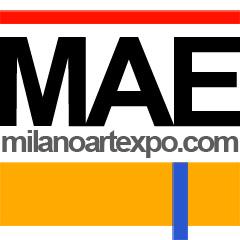
-
